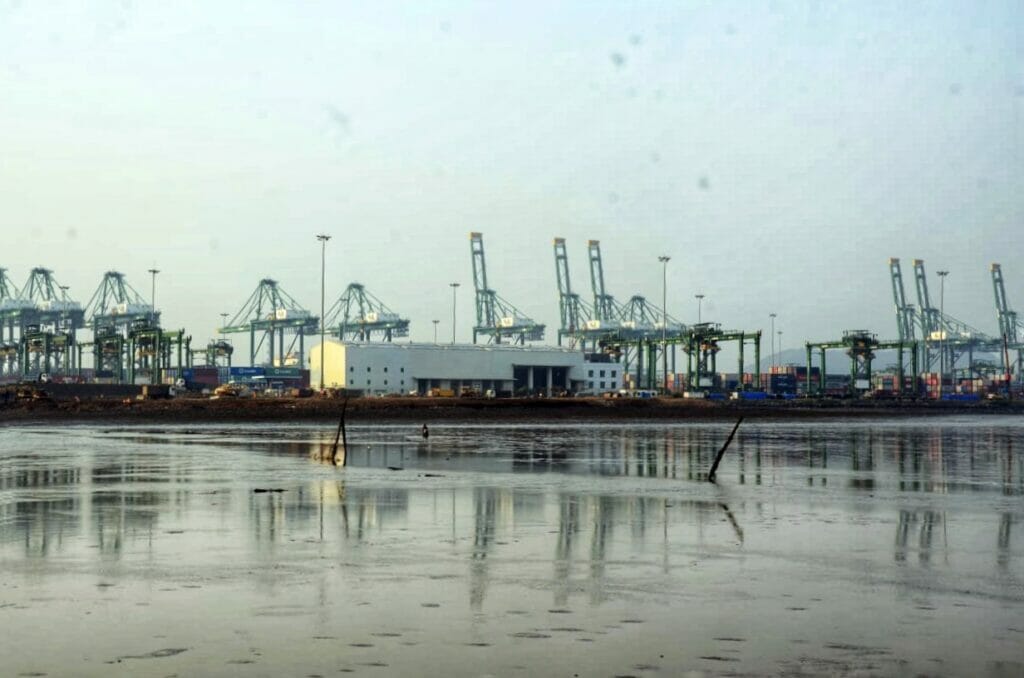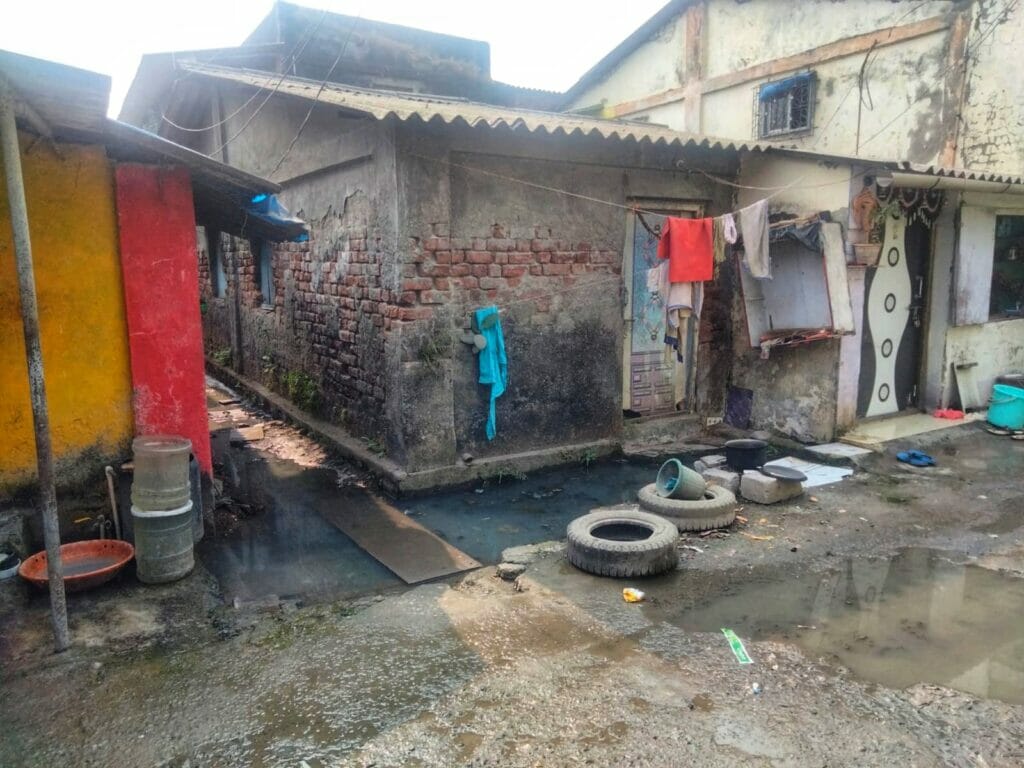On February 7, 2023, 30 fishermen from Uran Koliwada were arrested for opposing work on the Uran bypass bridge. The grounds for the FIR against them was that the accused were causing “danger to the nation,” as the project is of “national importance.” While they were given bail, the arrests are emblematic of fisherfolk’s fight to oppose the rampant and widespread destruction of their fishing areas by development far and wide.
Fishermen from Uran Koliwada have been protesting against various projects carried out by Jawaharlal Nehru Port Trust (JNPT), City and Industrial Development Corporation of Maharashtra (CIDCO), Navi Mumbai Special Economic Zone (NMSEZ) and other companies for several years. In a number of orders passed by the Bombay High Court and the National Green Tribunal, it has been held that the fisherfolk have a customary right to fish for a living in the creeks, in this case, the Uran Creek. These projects have detrimentally impacted the practice of such customary rights.
Due to the constant digging, dredging and piling by various JNPT projects, the coastal erosion, and ecology of the creek has been altered permanently. Fishing grounds are silted, fish spawning areas are becoming dead zones, carbon fertilisation due to untreated effluent has caused unwanted growth of algal blooms inviting birds, and fertile paddy fields are ingressed with salt making it impossible to cultivate crops. Augmenting geography and ecology has led to the Koli Community’s loss of their traditional fishing practices.

Infrastructure versus the people
Post-independence in India, infrastructure development was seen as the sole responsibility of the Indian government. The construction of dams, ports, and airports was perceived as a sign of growth and development. Gradually, with economic reforms in the 1990s, infrastructure development was privatised, and new models of revenue sharing and investment emerged. Such arrangements have raised questions about development – for what, for whom, and at what cost?
Mainstream economics typically interprets this “through a very limited and often misleading notion of ‘rationality'” based on individualism driven by self-interest, according to development economist Jayati Ghosh. But such a view disregards culture and politics that are equally integral, leading to growing inequality, material insecurity, and the hollowing out of communities in society. When such development comes at the cost of the lives and livelihoods of subaltern groups, it calls into question the replicability, reliability, and social vulnerability of such models.

Development trumps all
Globally, increased trade, enhanced efficiency and improved processes have made it difficult for traditional ports with outdated facilities and systems to compete effectively. India has 13 major ports to meet the demands of international trade. One of the largest of them is the Jawaharlal Nehru Port, located in Raigad district and connected to Mumbai via the Thane creek.
As basic principles of infrastructure suggest, port building is location-specific, land and capital-intensive. Expanding the capacity of the infrastructure that is already present is often not possible, leading to a demand to increase infrastructure, often requiring land acquisition. For this, land is usually bought in bulk, based on estimates of future growth and demand to accommodate additional trade volume. JNPT’s proximity to Mumbai, the financial hub of the country, and the coastal geography of Uran make it the ideal location for a port suitable for bulk trade.
During the early 1980s, JNPT, formerly Nhava Sheva Port Trust, acquired the land of the village Sheva Koliwada in Uran Taluka for the second phase of its development. The Trust relocated the village, comprising two communities – Sheva, the farmers, and Koli, the fishing community.
The Koli households were relocated to a transit camp temporarily, with a promise to be shifted to 17 hectares of land elsewhere. This transit camp was named Hanuman Koliwada. But as the port has fulfilled national ambitions, the Koli Community has been left behind.

No livelihood for the Hanuman Koliwada
A typical village on the Konkan coast smells of fish as different varieties of fish are dried and processed for consumption during the rainy season. The tragedy of Hanuman Koliwada is that they neither have excess fish to catch in the polluted creeks, nor do they have space to dry, store and process fish for consumption, let alone sale.
Apart from fishing, the community is dependent on other allied activities such as salt farming, mud keeping, harvesting fruits, cattle rearing, poultry, and selling dry hay. Mud keeping refers to the collection of mussels, crabs and other shellfish from mudflats, and it is a substitute for fish in their diet and fetches a good income. The residents are unable to farm due to the infertile soil in the transit camp in contrast to their original village, where food security was ensured throughout the year. Since alternate livelihood options were available, their dependence on fishing did not disturb the lifecycle of species in the creek.
And if traditional sources of livelihood are a dead-end, self-employment is restricted too. The women in the village do have enough space to set up small-scale and home-run businesses as an alternate source of livelihood, says Deepa, a member of a self-help group (SHG). The transit camp is a mere 1.9 hectares, inadequate for the 256 families. Compared to the average population density of 382 people per sq km in India, that is more than double the number of people living in one-fiftieth of a square kilometre.

Read more: The destruction of the Ulhas river: can we reverse it?

The promised land
JNPT has proposed a new site of 10.16 hectares nearby for their relocation. However, the proposed plan is 40% less land than the original commitment. Further, according to the village leaders, it does not adhere to proper road specifications as prescribed in the Maharashtra Regional and Town Planning Act (MRTP), 1966, thus compromising the safety of the villagers.
Hence, the community is demanding relocation to their original village site. The original site has fertile soil ideal for farming and good tree cover of indigenous species. There are two open wells that provide a stable source of water for drinking and domestic purposes, whereas in the transit camp, they receive irregular drinking water supply. The site is also closer to fishing spots and the residents believe it will meet their need for a better quality of life.
40 years hence, the original village is still unutilised. Despite the acquisition by JNPT for an imagined future demand, it is reclaimed by the forest. The resources on it, like water or mango trees, are leased by the JNPT to contractors.

The fight for relocation for Hanuman Koliwada
On 15th August 2022, the gram sabha of the Hanuman Koliwada passed a resolution stating their desire to go back to their original village. They held a channel bandh for over 7 hours by blocking ship traffic in the creek, along with protest demonstrations, slogan chanting and flag hoisting at the original site, demanding relocation. This is one of the many demonstrations taken out over the past years.
With unfair resettlement meted out to them, the unutilised original village site remains a painful oasis for Hanuman Koliwada residents. The community is left with no other option but to claim the original village, even facing the risk that one day the infrastructure will expand, displacing them once again. They are also in danger of losing their cultural heritage and traditional fishing practices, and so have vowed not to be silenced into accepting forged promises but are strong in their resolve to carry out the big fight.
Then, on January 8th, 2023, the Hanuman Koliwada peacefully reclaimed their original village according to the orders of honourable Lokayukta.
Rather than resorting to weapons, the community chose the constitution as their shield for protection. Rather than a defensive mechanism they sought protection from the judiciary, media and civil society. They taught themselves the constitution, channelised their emotional anguish into a movement inspired by its values of fraternity, equality and liberty. The members demand transparency, accountability and responsibility from the administration.

An ever-present dichotomy
The significance of the sensitivity of local governments can’t be emphasised enough in such circumstances. The conversation is not one of development versus the environment, but of about inclusivity and sustainability. The arrests of the community members of Hanuman Koliwada are not just a symbol of culled voices, but a lesson and warning for civilians not to choose development over the sacrifice of lives and livelihoods.
CIDCO is now proposing to reclaim the remaining part of the landing site of Uran creek. An 11-metre-wide bypass road has been proposed, which will cut through the landing site covered with mangroves and mudflats. If this area is also usurped, there will be no site left for fishing and the fisherfolk will lose their only source of livelihood.